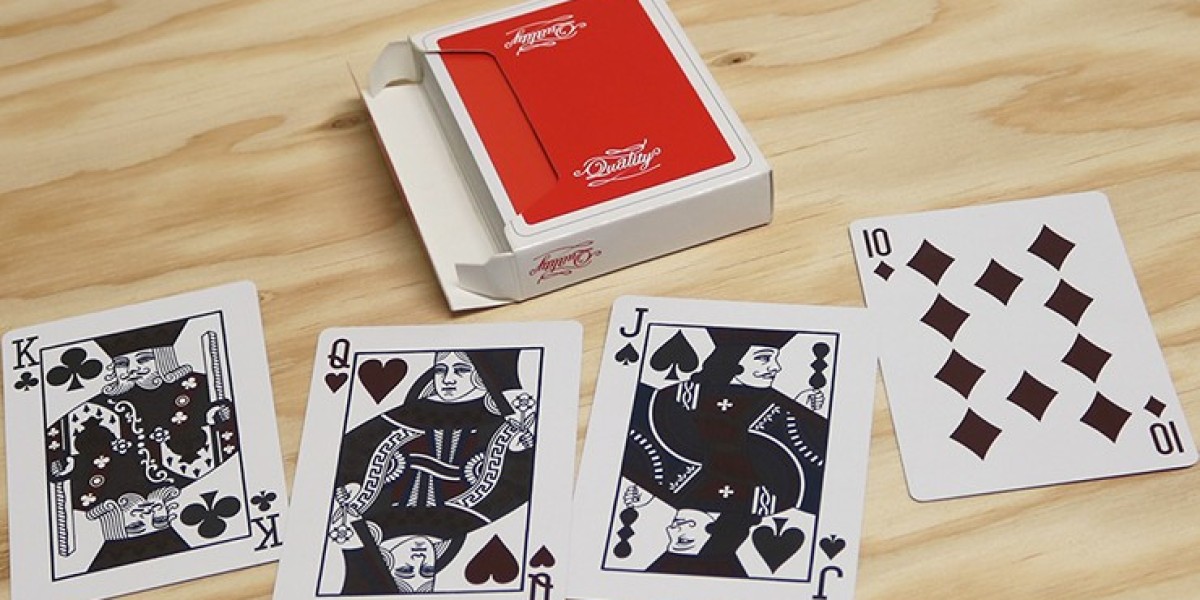Playing cards are used across the world for games, magic tricks, cardistry, and even educational or promotional purposes. They come in a variety of sizes and styles, and understanding their dimensions is important whether you're buying, designing, or manufacturing them. This guide will cover everything from the general card dimension to mini and large playing card sizes.
Understanding General Playing Card Dimension
The general card dimension refers to the average or most common size that Playing Card Dimensions are produced in. While there are some variations depending on the region or use case, there are two primary standards that are widely recognized globally:
Poker Size
Bridge Size
The poker-size playing card is the most popular and is often used in casinos and home games. The bridge-size card is slightly narrower and used in games requiring more cards in hand, such as Bridge or Canasta.
Standard Playing Card Dimensions
Standard playing cards, especially those used in poker, follow a very specific dimension. The size of a standard poker card is approximately:
2.5 inches x 3.5 inches (63.5 mm x 88.9 mm)
These dimensions are considered the default size for most card games, magic tricks, and general use. They are large enough to display designs and text clearly, while still being easy to shuffle and handle.
Bridge cards, though similar in height, are slightly narrower:
2.25 inches x 3.5 inches (57 mm x 88.9 mm)
Bridge cards are preferred by some due to their slim width, which makes it easier to hold more cards at once.
Mini Playing Card Dimension
Mini playing cards are a compact alternative to standard cards. They are often used as novelty items, travel games, or for marketing purposes where space is limited. The mini playing card dimension generally falls into the range of:
1.75 inches x 2.5 inches (44.45 mm x 63.5 mm)
These cards are functional and can still be used for playing, but due to their size, they are more challenging to shuffle and handle, especially for individuals with larger hands. However, they are perfect for situations where portability and space-saving are priorities.
Large Playing Card Dimension
On the opposite end of the spectrum are large playing cards. These are often used for visibility in demonstrations, magic shows, educational activities, or for people with visual impairments. Large playing card dimension typically ranges from:
3.5 inches x 5 inches (88.9 mm x 127 mm)
to4.5 inches x 7 inches (114.3 mm x 177.8 mm)
Some oversized cards can be even larger, but these sizes are most common in commercially available large cards. Their bigger print and design make them eye-catching and easy to read from a distance.
Comparison of Playing Card Sizes
Type of Card | Dimensions (inches) | Dimensions (mm) |
Poker Size | 2.5 x 3.5 | 63.5 x 88.9 |
Bridge Size | 2.25 x 3.5 | 57 x 88.9 |
Mini Playing Card | 1.75 x 2.5 | 44.45 x 63.5 |
Large Playing Card | 3.5 x 5 to 4.5 x 7 | 88.9 x 127 to 114.3 x 177.8 |
This table gives a quick overview of how different playing card dimensions compare. Whether you're designing your own deck or choosing the right card size for your needs, this can help you make an informed decision.
Why Card Dimensions Matter
Choosing the correct card size is not just about aesthetics. The playing card dimension impacts several factors:
Usability: Smaller or mini cards may be harder to shuffle or hold, while large cards can be difficult to manage for fast-paced games.
Visibility: For performances or teaching, large cards are preferred for better visibility.
Design and Layout: Standard cards provide enough space for clear illustrations, icons, and text.
Storage: Mini cards save space, while large cards may need special packaging.
Whether you’re a game developer, magician, or just a card game enthusiast, knowing the right size helps create a better experience.
Material and Thickness Considerations
Alongside dimensions, the material and thickness of playing cards also play a role in their usability. Most quality playing cards are made from either paperboard with a plastic coating or 100% plastic. Thickness typically ranges between:
0.25 mm to 0.33 mm
Thicker cards are more durable but can be harder to shuffle. Thinner cards wear out faster but are more flexible.
Custom Card Dimensions
If you're looking to create a custom deck, it's entirely possible to choose non-standard dimensions. This approach is often used for business purposes such as marketing, branding, or corporate gifting. However, it’s essential to balance creativity with practicality and user comfort when selecting custom sizes.
A few custom uses include:
Flashcards
Educational tools
Promotional cards
Tarot or oracle decks
While creativity is encouraged, sticking close to standard dimensions helps ensure the cards remain usable and comfortable to handle.
Conclusion
Whether you are playing a classic game of poker or creating your own custom deck, understanding playing card dimensions is essential. From the commonly used poker-size cards to mini playing card dimensions for travel-friendly options, or large playing card dimensions for better visibility, each size serves a unique purpose.
Being aware of general card dimension guidelines helps you choose the right type of card for your specific needs. When selecting or designing a deck, consider not only the size but also the material, thickness, and intended use. This ensures a perfect balance between functionality and style, making your card experience enjoyable and effective.








